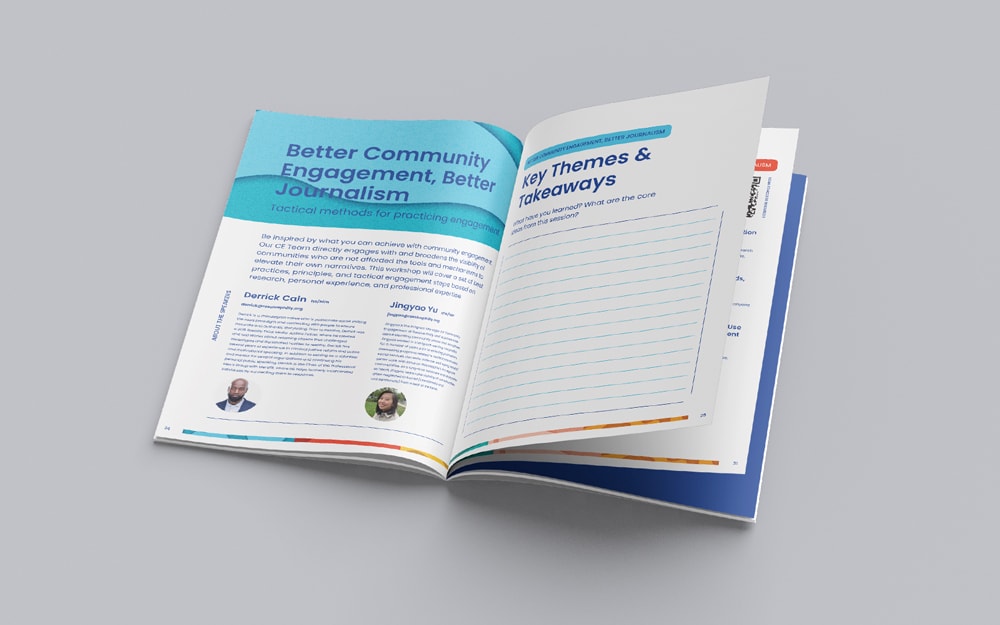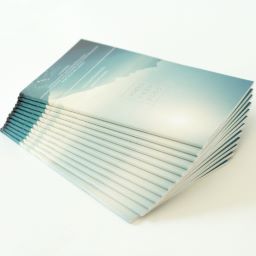How to Combine Print and Digital for Next-Level Booklet Printing
How to Combine Print and Digital for Next-Level Booklet Printing
Blog Article
The Essential Overview to Understanding Brochure Printing Options and Techniques
The process of pamphlet printing entails several considerations that can considerably impact the end product. From selecting the proper style and size to recognizing the nuances of binding methods, each choice plays a crucial duty. Additionally, factors such as paper stock and printing techniques further affect the efficiency of the pamphlet. As one navigates these alternatives, it becomes necessary to grasp just how they interconnect and what that implies for the total result.
Recognizing Booklet Styles and Dimensions
When considering pamphlet printing, understanding the numerous layouts and dimensions offered is necessary for attaining the wanted presentation. Booklets can be produced in various formats, consisting of saddle-stitched, spiral-bound, and perfect-bound, each offering unique advantages. Usual sizes range from standard letter (8.5 x 11 inches) to smaller choices like A5 (5.8 x 8.3 inches), enabling flexibility based upon web content and target audience.Selecting the proper size can influence both the design and reader engagement. Larger sizes might fit visually driven web content, while smaller sized formats might be much more portable and easy to use. In addition, the number of pages impacts the choice of binding method, as thicker brochures may need stronger bindings. Eventually, recognizing these elements enables an extra customized strategy, guaranteeing that the end product aligns with the designated message and visual, boosting the overall performance of the interaction.
Picking the Right Paper Stock

Binding Techniques: Factors To Consider and choices
When it comes to binding methods for booklets, numerous options are readily available, each with unique benefits. Saddle stitch binding offers an economical option for thinner brochures, while best binding techniques give a more sleek search for thicker magazines. Wire-O binding stands apart for its toughness and simplicity of use, making it suitable for papers that need flexibility.
Saddle Stitch Binding
Saddle stitch binding provides a affordable and functional option for assembling pamphlets, making it a preferred selection amongst authors and organizations. This binding approach entails folding sheets of paper in half and stapling them along the fold line, creating a well organized and neat appearance. Commonly suitable for brochures with a lower web page matter, saddle sewing is suitable for magazines, pamphlets, and training products. The simpleness of this strategy enables fast manufacturing and is usually favored for short runs or promotional things. It is crucial to keep in mind that saddle stitch binding may not be ideal for thicker pamphlets, as the spine may not hold up under increased weight. Generally, it remains a dependable choice for several printing projects.
Perfect Binding Strategies
Perfect binding is a widely made use of technique that supplies a sleek and expert surface to magazines and pamphlets. This technique includes gluing the web pages together at the back using a solid adhesive, enabling for a tidy edge and the capacity to hold a bigger variety of web pages compared to saddle stitching. Perfect binding is particularly suitable for thicker booklets, such as catalogs and yearly reports, where a tough, flat spinal column is preferred. Furthermore, it provides the option for a printed cover that can be developed to improve aesthetic charm. Factors to consider such as web page count, paper weight, and the meant use of the brochure must be taken into account, as they can impact sturdiness and overall quality.
Wire-O Binding Options
Wire-O binding, understood for its resilience and flexibility, supplies an excellent option for brochures that need easy page transforming and an expert appearance. This binding technique employs a series of steel loopholes that hold web pages firmly, allowing them to lie flat when open. It is specifically ideal for discussions, magazines, and guidebooks due to its robust nature. Wire-O binding is readily available in different colors and diameters, fitting various page matters and thicknesses. Additionally, it allows the inclusion of covers and tabs, enhancing the pamphlet's general visual. Considerations for Wire-O binding consist of the selection of wire color, the size of the loopholes, and the degree of customization wanted, every one of which can profoundly influence the final product's look and performance.
Digital vs. Offset Printing: Which Is Best for You?
When choosing a printing approach for pamphlets, recognizing the differences in between digital and balance out printing is essential. Digital printing utilizes contemporary innovation to produce premium prints quickly and cost effectively, making it perfect for brief runs or jobs calling for fast turnaround times. It permits modification, supplying the capacity to publish on-demand with minimal waste.In comparison, balance out printing is a conventional technique that excels in generating huge quantities with regular high quality. It entails moving ink from a plate to a rubber blanket, after that to the paper, which leads to precise information and vibrant colors. Counter printing usually calls for longer configuration times and is more cost-efficient for bigger volumes.Ultimately, the selection between electronic and counter printing depends on project needs, budget plan, and wanted quantity. For have a peek here tiny, time-sensitive tasks, electronic could be the best selection, while offset may be preferable for larger, top quality manufacturings.

Designing Your Booklet: Tips and Ideal Practices
When developing a pamphlet, cautious attention to design, typeface selection, and color use can greatly enhance its performance. A well-structured layout guides the viewers's eye, while suitable fonts assure readability and share the wanted tone. In addition, efficient use shade can evoke feelings and emphasize key info, making the total style more impactful.
Choosing the Right Layout
Just how can one successfully select the appropriate format for a brochure? First, it is vital to review the brochure's function and target audience. A clean, organized format improves readability and engagement. Utilizing a grid system can aid in aligning components regularly, creating an expert look. Furthermore, integrating aesthetic pecking order through differing dimensions and positionings of images and message can lead the reader's eye and emphasize crucial info. It is basics also vital to leave sufficient white room, which avoids overcrowding and permits better emphasis. Lastly, checking various formats via mock-ups can provide understanding right into exactly how the design carries out in real-world situations, guaranteeing that the final product fulfills both useful and visual demands.
Choosing Appropriate Font Styles
An appropriate font can significantly enhance the overall style of a booklet, complementing the format and strengthening the web content's message. The choice of font styles should think about readability, specifically for body text, as it assures the details is available to all visitors. Sans-serif typefaces are typically preferred for digital styles, while serif fonts can lend a traditional feel in printed products. It's advisable to restrict font selections to 2 or three to keep visual coherence. Furthermore, typeface size plays an important function; headings ought to be unique but not frustrating, while body message need to be comfy for reading. When picking fonts, placement with the brochure's motif and target audience is crucial for reliable communication and aesthetic charm.
Reliable Use of Color
Color functions as a powerful tool in brochure style, shaping perceptions and directing viewers feelings. It can evoke sensations of enjoyment, peace, or count on, depending upon the hues chosen. Developers must consider shade theory concepts, ensuring that the chosen palette lines up with the brochure's message and target audience. Using cozy shades like red and orange can produce necessity, while cooler tones like green and blue foster tranquility.Additionally, contrast plays an important role; complementary shades can boost readability and visual appeal. Consistency in shade use throughout pages even more strengthens brand identification and cohesion. Inevitably, reliable color execution not just captures interest but additionally strengthens the brochure's purpose, making it an essential facet of successful style.
Ending Up Touches: Coatings and Special Results
While numerous think about the web content and format of a booklet the most essential elements, the ending up touches, such as coverings and unique effects, play an important duty in improving its overall appeal. Coatings can supply defense and toughness, making sure that the brochure withstands deterioration. Matte finishes offer a sophisticated, non-reflective surface, while glossy finishings can make colors appear even more attractive and vivid. Special effects, like embossing or foil stamping, add a tactile measurement that can develop an unforgettable perception. These methods can highlight specific areas, drawing focus to essential info or producing visual rate of interest. In addition, UV finishing can offer a high-shine finish that boosts the total look.Together, these finishing touches not just improve the pamphlet's visual yet additionally interact expertise and attention to detail, eventually leaving a long-term effect on the reader.
Cost Considerations for Brochure Printing
Recognizing the various cost considerations for booklet printing is necessary for businesses and organizations aiming to optimize their budgets. Key factors influencing expenses consist of the option of paper, binding, and ink methods. Better materials, such as premium paper or specialized inks, usually enhance the overall expenditure. Additionally, the dimension and page count of the brochure play a significant duty; larger booklets require even more sources and time to produce.Another crucial consideration is the printing method, whether digital or offset, as each has its very own prices structure and suitability for various amounts. Companies ought to also consider layout costs, which can vary based upon intricacy and the use of expert solutions. Ultimately, shipping and handling fees can include in the total amount, specifically for big orders. By assessing these components, organizations can make informed decisions that line up with their monetary capacities while attaining the desired high quality in their printed materials.
Often Asked Inquiries
What Are the Environmental Effects of Pamphlet Printing?
The environmental influences of pamphlet printing include logging from paper manufacturing, review carbon discharges from transport, and waste generation from discarded materials - Booklet Printing. Lasting practices, such as making use of recycled paper and eco-friendly inks, can reduce these impacts
Exactly How Can I Make Sure Color Precision in My Pamphlet?
To assure shade precision in a brochure, one must utilize adjusted monitors, use expert shade accounts, carry out test prints, and choose high-grade printing solutions that provide color matching and proofing options for best results.
What Is the Regular Turn-around Time for Brochure Printing?
The common turnaround time for booklet printing varies depending on the complexity and quantity - Booklet Printing. Usually, it ranges from a few days to 2 weeks, affected by aspects such as printing approaches and ending up requirements
Are There Minimum Order Quantities for Brochure Printing?

Can I Publish Brochures in Several Languages?
Printing brochures in multiple languages is possible. Many printing services offer choices for multilingual or bilingual designs, enabling reliable interaction. Mindful planning warranties that create aspects fit numerous languages without endangering readability or appearances. In addition, aspects such as paper supply and printing techniques further affect the efficiency of the booklet. When taking into consideration pamphlet printing, understanding the various formats and sizes readily available is necessary for attaining the desired discussion. When picking a printing technique for pamphlets, understanding the differences between digital and counter printing is necessary. Furthermore, the size and page count of the pamphlet play a considerable duty; bigger booklets require even more resources and time to produce.Another important factor to consider is the printing strategy, whether electronic or balanced out, as each has its own rates framework and viability for various quantities. The environmental impacts of pamphlet printing consist of logging from paper production, carbon exhausts from transportation, and waste generation from disposed of materials.
Report this page